Lolcats: 120 years older than the internet
posted Thursday, January 16, 2014 at 2:21 PM EDT
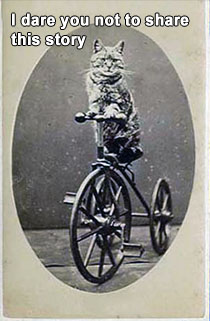
Nearly 150 years ago, the English photographer Harry Pointer (1822-1889) had an epiphany. A portrait studio photographer in the resort city of Brighton, he realized that there was more to cats than meets the eyes – they could be photographed copycatting humans. This idea struck him one day in 1870 while photographing his pet cat doing ordinary cat things like sleeping or lapping up milk. But Harry Pointer saw beyond their simple animal behavior.
He saw them as feline photographic stars.
Brighton was one of Victorian England’s premier summer resorts and Pointer earned his living taking and selling a type of photo print known as carte de visites to London day-trippers who came to Brighton to relax at the beach and play at the amusement park piers. These vacationing Londoners were the perfect audience for funny photographs of cute posed cats.
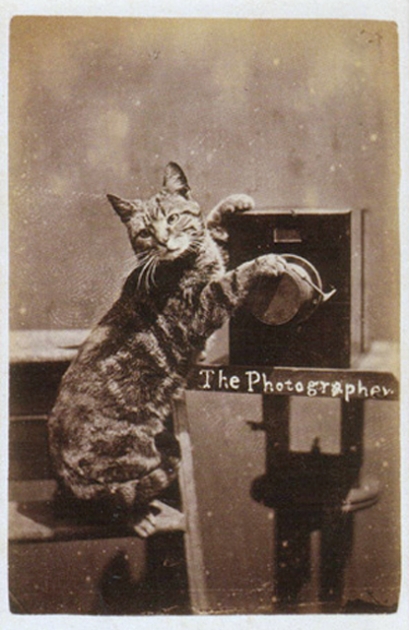
The carte de visite, or CDV as it was more commonly known, transformed 19th century consumer photography. Up until the 1860s, portrait photography studios produced photographs using tintype or collodion processes. These prints were difficult and costly to make, reducing their popularity. By contrast, the CDV materials were made using a relatively cheap albumen print mounted on thicker card stock. The process was significantly cheaper and easier to use.
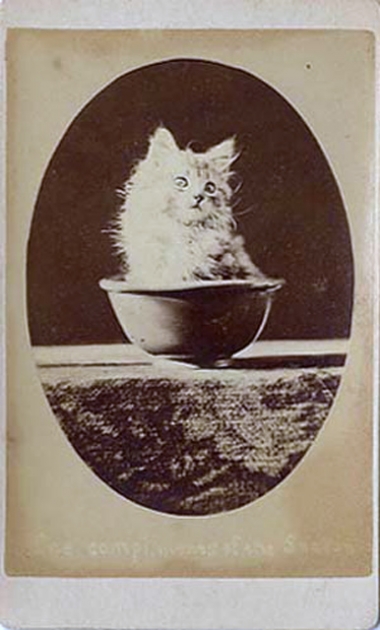
Not only was CDV a cheaper medium, but the resulting CDV image was more realistic and lifelike than the black-base tintype. CDVs quickly became very popular – the phenomenon was known at the time as "cardomania" – and prices were driven down. By the 1870s, studios were advertising that their customers could have their picture taken and get six copies of the photograph for just one dollar. Receiving multiple copies of an image was an obvious upgrade from the one-off images of yore. By the late 1860s they spun-off another major photographic innovation: the family album.

For an 1870s photographer like Harry Pointer, the photography of cats presented many technical challenges. His subjects were by nature restless and uncooperative, not unlike my own cats. Harry Pointer was very literally trying to herd cats.
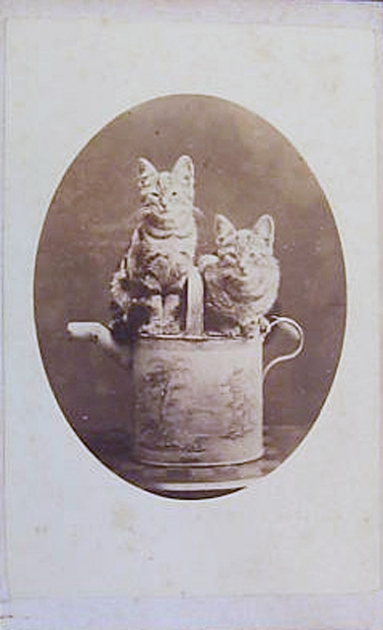
The glass plate cameras he used were slow and required relatively long exposures, and the photo flashbulb wouldn't be invented for another fifty years. Photographing cats by natural light or flash powder required Zen-like patience and feline grace. Pointer persevered and by 1872 he had created over 100 shots. By 1884, as The Photographic News reported, he had published over two hundred pictures in his "The Brighton Cats" series.
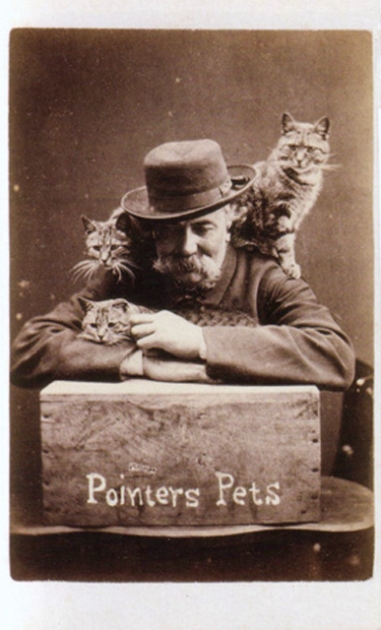
The corpus of The Brighton Cats work exhibits a beautiful evolution, for the artist-entrepreneur wasn't satisfied with mere greatness. No, Harry Pointer sought transcendent brilliance. Unhappy to merely imitate human behavior, he quickly realized adding clever cat captions like "Miss Tabbie at the Rink" (to the photo of a cat in roller skates) added a certain ironic brilliance. Even a mundane cat carte would speak to his customers' yearnings when paired with such captions as "A Happy New Year" or "Very many happy returns of the day."
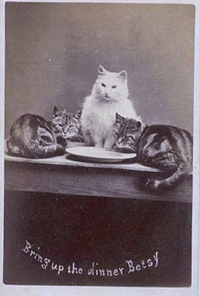
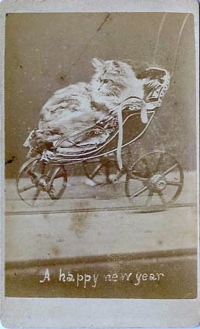
Though Pointer lacked such modern wonders as quickmeme, imgur and buzzfeed, he made up for this lack of viral channels with a brilliant piece of marketing: on the back of every Pointer’s CDV was his logo of a cute cat along with his studio address. As affluent tourists bought his CDVs and sent them to friends and family at home and abroad, Pointer’s fame grew. All thanks to that adorable kitten lithograph logo.

The danger – and beauty – of memeing is that your meme might one day come to eclipse your own life and imagination. Naturally, within just a few years, other photographers followed in Pointer’s pioneering cat tracks. One of these, Harry Whittier Frees (1879-1953), took adorable animal photos to brave new heights: on one fortuitous night in 1906 he put party hats on his family cats and photographed them sitting on a kitten-scale dinner table. The photograph drove his friends to paroxysms of laughter and inspires us all to greatness in memeing (and photography).

For more on Harry Pointer: http://www.photohistory-sussex.co.uk/BTNPointerCats.htm
You can find Harry Whittier Frees book "Animal Land on the Air" on Amazon, several other books by and about Frees here or books on cartes de visites here.
You might also enjoy the mystery of photojournalist Robert Capa and his "Mexican Suitcase," the story behind the iconic image of Che Guevara, the making of the famous 'Men at Lunch' photo, news of the 100-year-old negatives discovered in the Antarctic or the story of Mark Twain, first celebrity photographer.
Imaging Resource is the premier resource for all things imaging on the web. In our pages you'll find fascinating articles on photographic history, unbiased camera reviews and yes, the occasional kitten linkbait. You can follow Imaging Resource on facebook, google+ or twitter.